Developments in Education - The Little Rock Nine, 1957 (Edexcel GCSE History): Revision Note
Exam code: 1HI0
Timeline
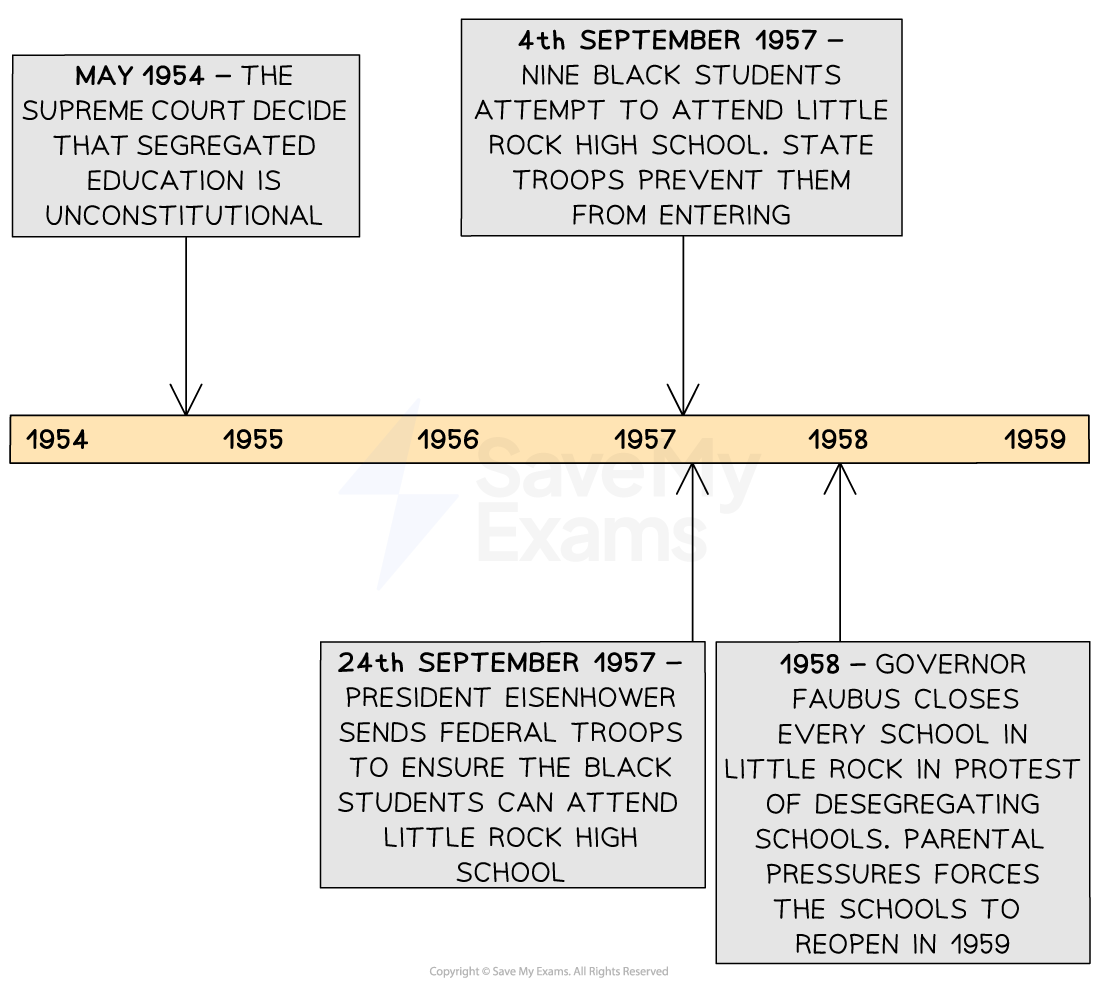
Summary
Schools, as well as most other public spaces, had been strictly segregated based on skin colour in the South for many years. The campaign to end this segregation was known as the Civil Rights Movement. Segregating schools based on skin colour had been judged as illegal by the Supreme Court but many schools would still not allow Black students to enroll. The attempt by nine Black students to enrol at a previously ‘Whites Only’ school in Arkansas in 1957 put America’s Civil Rights Struggle on the front of newspapers all over the world. It also led to the President sending soldiers to a school to enforce the ruling of the Supreme Court in the face of fierce opposition.
Who were the Little Rock Nine?
In 1957, Little Rock High School in Arkansas was forced to desegregate
The Brown vs Topeka ruling stated that desegregated schools were unconstitutional
The State Governor of Arkansas was called Orval Faubus
Faubus was a strong opponent of school desegregation
Arkansas, a southern state, wanted to keep segregated schools
The Little Rock Nine were nine Black students who had enrolled at the ‘Whites Only’ Little Rock High School in Arkansas
The students enrolled in 1957, three years after the Supreme Court had ruled that segregation broke the Constitution in the Brown v. Topeka judgement
Originally 75 Black students had applied to join Little Rock High School
Just 25 students were accepted
A campaign of intimidation led to just nine taking up their places
Reactions to the Little Rock Nine
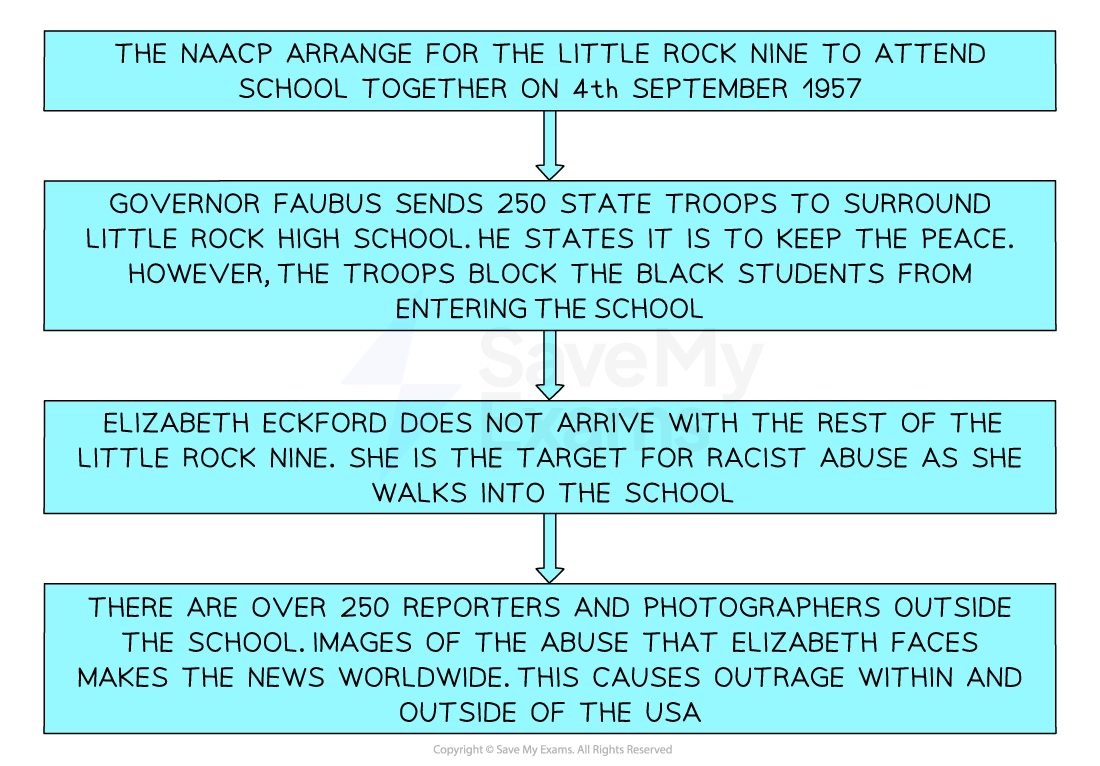
When the nine Black students arrived for their first day of school on 3 September 1957, their entry was blocked by soldiers from the Arkansas State National Guard
The State Governor, Orval Faubus, claimed there was a danger of violence and public disorder if the Black students enrolled and ordered the soldiers to surround the school
On 4 September, Faubus ordered the National Guard to leave and the nine students were faced with a crowd of 1,000 angry protestors and hundreds of reporters
Fears for their safety meant that police guards escorted the Little Rock Nine home
How did Eisenhower resolve the events at Little Rock?
Governor Orbus was defying a Supreme Court ruling, and the coverage of events at Little Rock was damaging the USA’s reputation abroad
President Eisenhower decided to intervene by sending soldiers from the 101st Airborne Division to protect the nine Black students for the rest of the school year
Orbus responded by closing every school in Little Rock from the following September to prevent desegregation taking place
The schools remained closed for the entire academic year until a combination of pressure from parents and a Supreme Court ruling caused Orbus to reopen them in 1959
The Little Rock Nine being escorted to their lessons by soldiers:
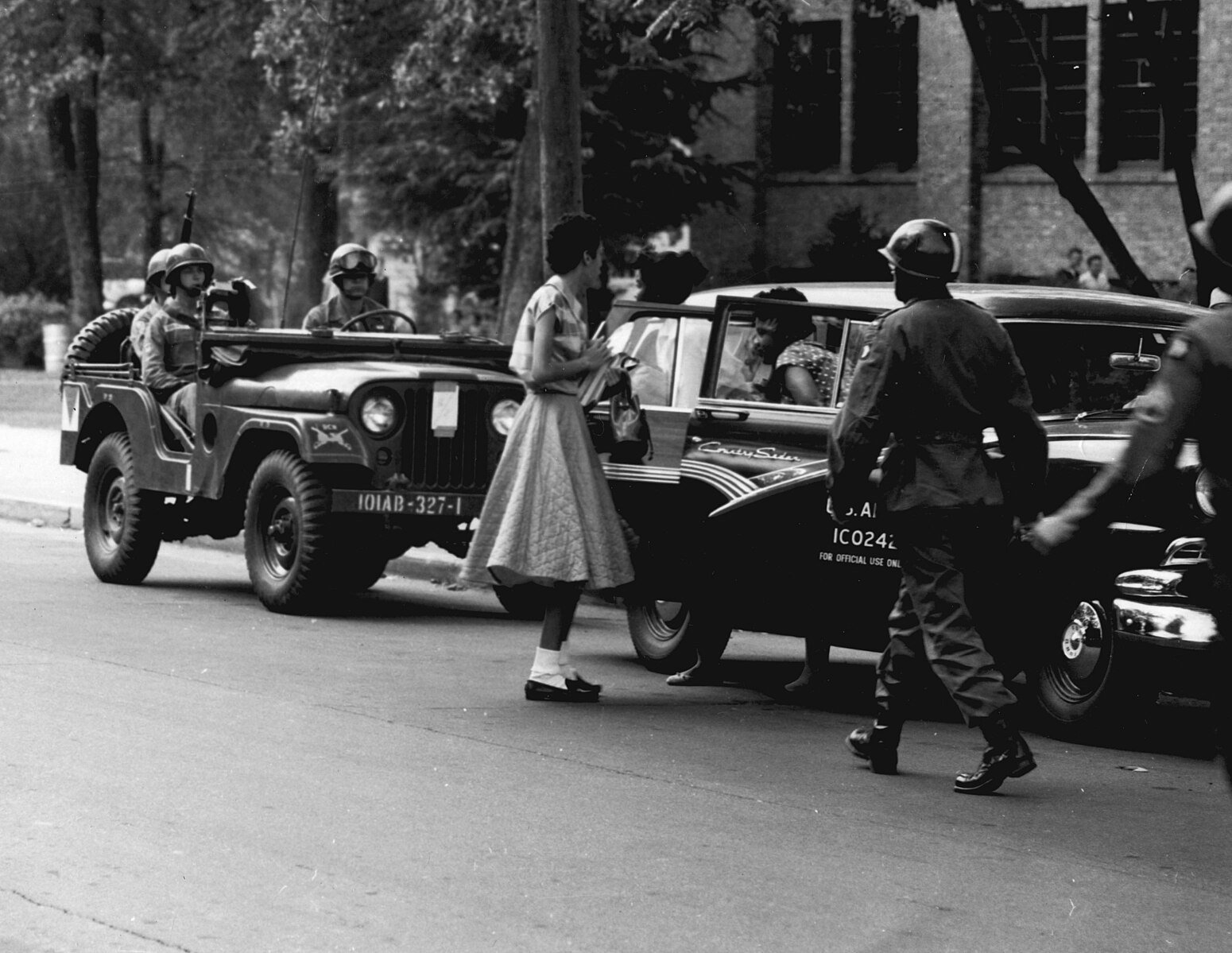
The Significance of the Little Rock Nine
The shocking scenes brought national and international attention to the Civil Rights struggle
Media coverage was essential and many people in the North were appalled by the openly racist events in Little Rock
It showed that the President was willing to intervene and even send troops to enforce the law
It also showed that Supreme Court judgements alone were not enough to bring about change – they had to be enforced
Events at Little Rock High School made headlines around the world
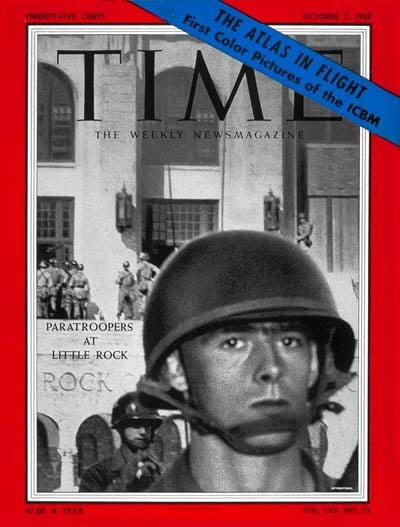
It illustrated how many people in the South were deeply committed to maintaining segregation
Orval Faubus’ actions may have appalled many people in the North, but he was re-elected as Governor of Arkansas four times
It showed how difficult it was to overcome tactics designed to delay desegregation
Little Rock’s schools did not become fully integrated until as late as 1972
The attempts to stop desegregation were extremely popular with many White voters in the South
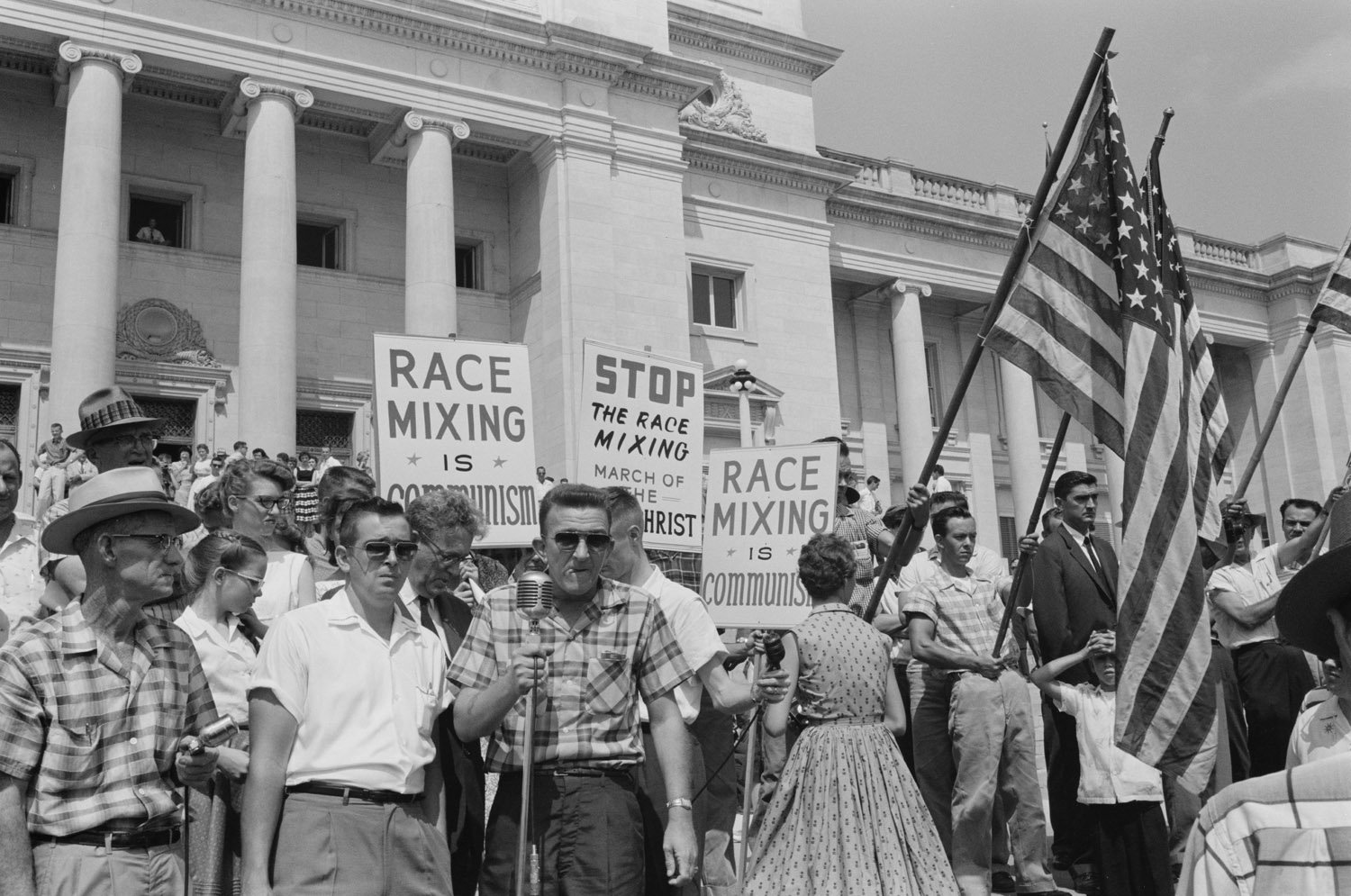
Worked Example
Give two things you can infer from Source A about opposition to the desegregation of Little Rock High School.
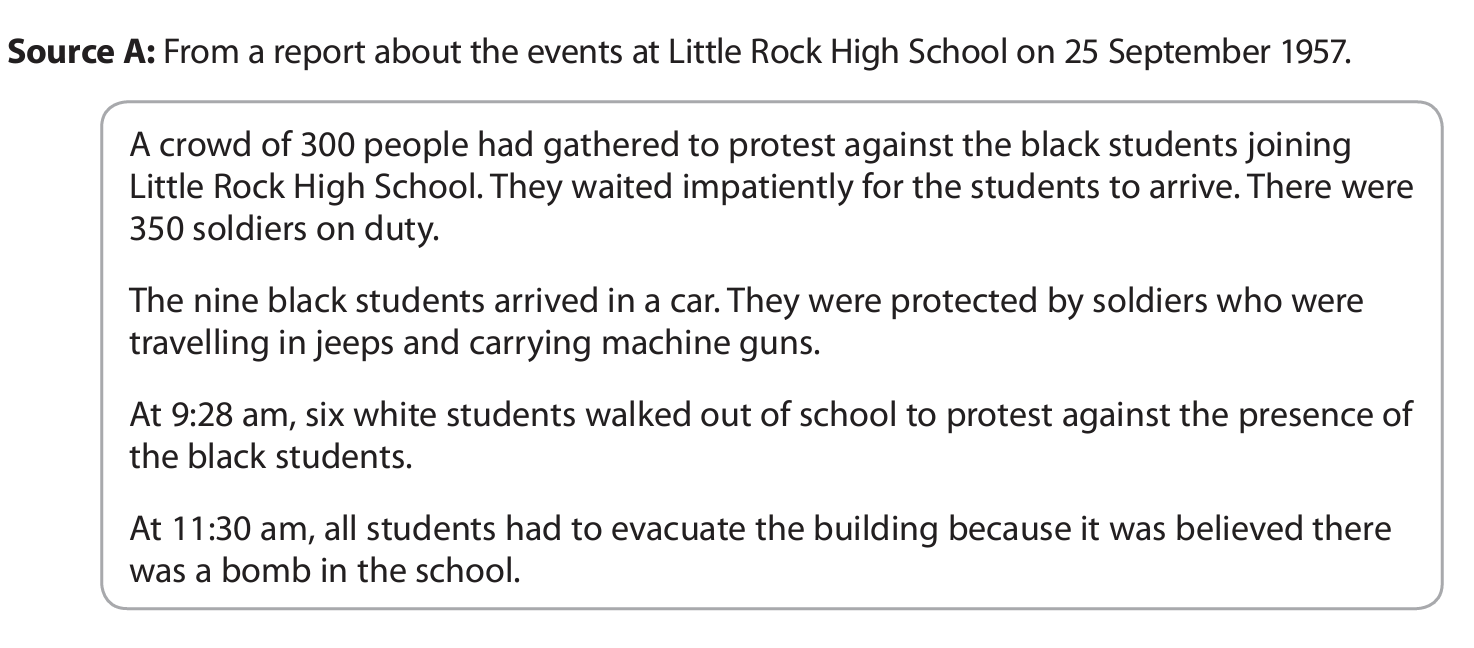
(4 marks)
Answer
What I can infer: That the government feared that the opponents to the desegregation of Little Rock HIgh School would become violent.
Details in the source that tell me this: The soldiers they sent to protect the Black Students were armed with machine guns.
What I can infer: Opposition to desegregation came from both students and people outside of the school
Details in the source that tell me this: Six students walked out in protest and a bomb threat was phoned in from outside.
Examiner Tips and Tricks
Question 2 on this exam paper will ask you to explain why something was important, took place or didn’t happen. It will give you two bullet points to ‘scaffold’ your answer around but to achieve a high-level answer, you must create a third reason.

You've read 0 of your 5 free revision notes this week
Unlock more, it's free!
Did this page help you?